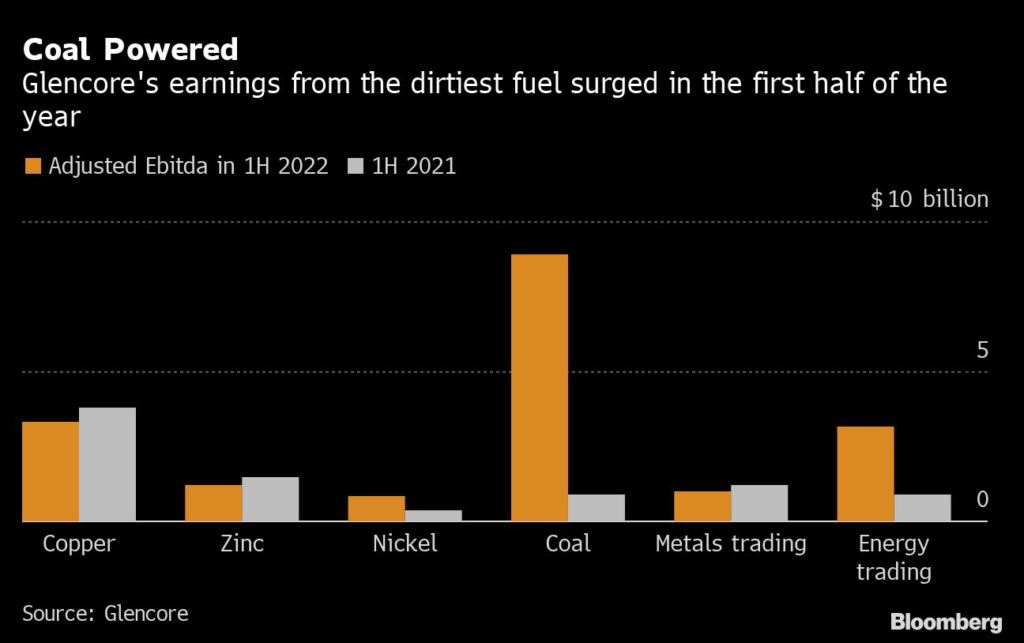Glencore Plc is facing new investor questions over the climate impact of its top performing coal mining unit, ratcheting up pressure on the world’s biggest shipper of the dirtiest fossil fuel.
(Bloomberg) — Glencore Plc is facing new investor questions over the climate impact of its top performing coal mining unit, ratcheting up pressure on the world’s biggest shipper of the dirtiest fossil fuel.
Shareholders with more than $2 trillion of assets under management will vote at a May annual meeting on a resolution urging the company to explain how its thermal coal business aligns with efforts to limit the increase in global temperatures to 1.5C. HSBC Asset Management and Legal and General Investment Management are among signatories to the document.
The move comes as concerns about climate change clash with the extreme profitability of coal, a result of the global energy crunch caused by Russia’s invasion of Ukraine. In the first half of 2022, Glencore posted a record core profit of $18.9 billion — including $9.5 billion from the unit that produces coal — largely thanks to soaring prices of the fuel.
Glencore has already promised to cap coal production at 2019 levels and reach net-zero emissions by 2050, and last month announced it wouldn’t develop one of the largest planned mines of the fuel in Australia. Some investors remain concerned about the company’s plans, and almost a quarter of shareholders voted against its climate report in October.
In response to questions, Glencore said it will publish its next Climate Progress Report in March, which will provide an update on the progress of its 2020 climate strategy.
Energy giants have for years been pilloried for not doing more to limit climate-damaging emissions, and activist investors recently have made significant inroads, capped off by a small climate-focused fund orchestrating the takeover of a portion of Exxon Mobil Corp.’s board in 2021.
The resolution regarding Glencore was co-filed by NGOs ShareAction and the Australasian Centre of Corporate Responsibility. It will need to answer the question in a detailed report if the resolution finds 75% backing. Should a 20% threshold be reached, the company will be required to respond but not on the terms dictated by the resolution.
A “higher degree of transparency is necessary in order to clarify how the company’s exposure to thermal coal is aligned with the 1.5C pathway and corresponds to its net zero commitment,” said Dror Elkayam, an ESG analyst and investment steward at Legal & General.
While Glencore has committed to stop mining thermal coal by 2050, including closing 12 mines by 2035, its has so far refused to give the levels of detail some of investors demand. The company argues that doing so would limit its flexibility to respond to changes in consumption, as well as local issues that affect its various mines.
“To give a detailed road map, I’m not sure what value that adds,” Chief Executive Officer Gary Nagle said last month. “The problem with giving minutia, granular detail is it takes away the ability of the business to operate with flexibility that we need.”
In 2021, Glencore traded 67.7 million tons of thermal coal through its marketing business, and mined 103.3 million tons of coal through its industrial business. Most of that was thermal coal used in electricity generation.
–With assistance from Thomas Biesheuvel.
(Updates with Glencore rundown plan from ninth paragraph)
More stories like this are available on bloomberg.com
©2023 Bloomberg L.P.










